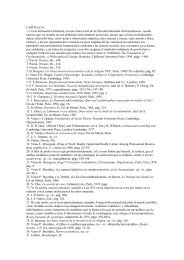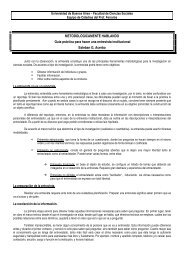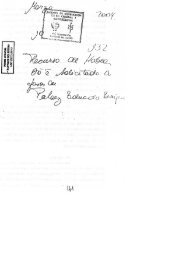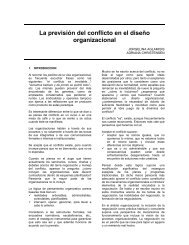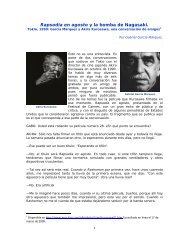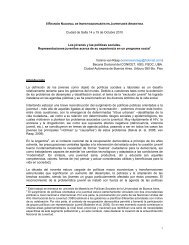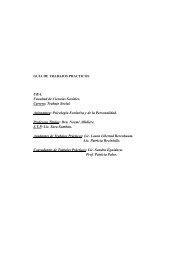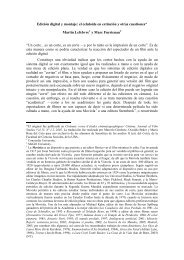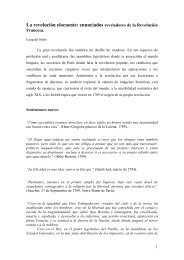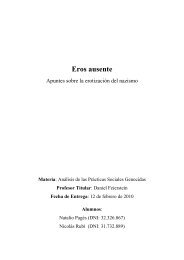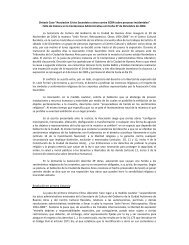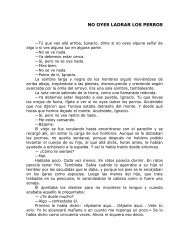Charisma Reconsidered
Charisma Reconsidered
Charisma Reconsidered
Create successful ePaper yourself
Turn your PDF publications into a flip-book with our unique Google optimized e-Paper software.
eason, other than the convenience of familiarity, preserved in various contexts.<br />
But it also appears that these forms of deference, far from being passé, seem<br />
continually to be renewed and applied to new categories, such as celebrity, or to<br />
take new forms with identifiable affinities to older forms of deference. Deference<br />
is itself a kind of residual behavior that is inexplicable within the framework of<br />
egalitarian democracy, demanded by no laws, and indeed is contrary to the basic<br />
trend of democratic society. Nevertheless it persists.<br />
These forms of deference may seem to have little to do with charisma in<br />
Weber’s sense. But the point is that they have little to do with instrumental<br />
rationality or tradition in his sense either. Traditional authority, for Weber, rests on<br />
a doctrine to the effect that the old is deserving of respect; thus the persistence of<br />
deference in non-traditional societies, which have abandoned this doctrine, would<br />
be a mystery. So there is some sort of residual element here, and if we assemble<br />
the cases that make up the residue we can see that they point toward some set of<br />
commonalities. It is this set of commonalities that Shils assimilated to the sacred<br />
or to the idea of the holy.<br />
One attraction of this revision of Weber is that it avoids the problem that<br />
he faced in attempting to assimilate all the phenomena in the residual category<br />
‘charisma’ to the positive model of the individual charismatic leader and the<br />
routinization of the leader’s charisma. Office charisma and similar phenomena are<br />
explained by virtue of their connection to the sacralized central institutions of<br />
society. The jurors contain within themselves a sacred spark, so to speak, which<br />
derives its sacredness from the fact that as jurors they embody and speak for the<br />
sacred core of society, the sacred ideal of justice itself.<br />
The problem with this approach, however, mirrors Weber’s problem with<br />
extending individual charisma to cover institutions. In the first place, charisma<br />
now seems to collapse into culture – the charismatic is that which is culturally<br />
predefined as charismatic. There is a sense in which this works very well for Jesus<br />
and Osama bin Laden. Such leaders fulfill prior cultural expectations, and in some<br />
sense call for the fulfillment of core religious ideas that are part of the pre-existing<br />
culture. But the further one pursues this approach, the more one derives the<br />
power of the leader from the culture, and thus collapses the category of charisma<br />
into culture, or tradition in Weber’s terms. This makes charisma unable to account<br />
for cultural creativity or change – precisely the explanatory task that Weber assigns<br />
to charisma. In the case of the individual charismatic leader, authority, in the pure<br />
case, comes from within and is ‘recognized’ by followers. Cultural expectations<br />
and culturally available explanations of the success of the leader – a religious<br />
ideology that invokes the concept of the divine spark, for example – account both<br />
for recognition and for the power of the leader. The originary creative character of<br />
leadership becomes a new ‘residual’ phenomenon. The derivation of charisma<br />
from the sacred thus is just as incomplete as the derivation of institutional<br />
charisma and other residual charismatic phenomena from individual charisma.<br />
TURNER CHARISMA RECONSIDERED 13



